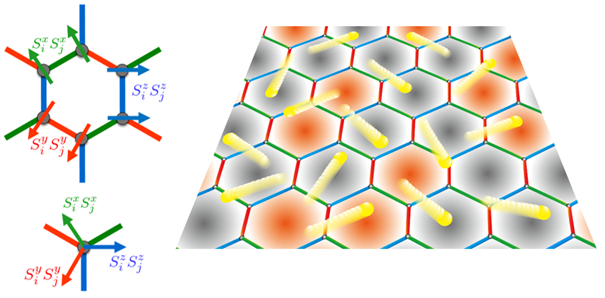DATE2024.03.14 #Press Releases
Observation of a localized state of Majorana particles induced by defects
--The Nature of the Majorana Particle in Real Materials --
The University of Tokyo
Tohoku University
Japan Science and Technology Agency (JST)
Summary of Presentations
A research group led by Graduate Student Kumpei Imamura, Assistant Professor Yuta Mizukami (now Associate Professor at Tohoku University), Associate Professor Kenichiro Hashimoto, Professor Takasada Shibauchi, Professor Yuji Matsuda, Kyoto University, Research Fellow Masahiko Yamada, Gakushuin University (now a specially-appointed lecturer at School of Science, the University of Tokyo), in collaboration with the Tokyo Institute of Technology and Ecole Polytechnique in France has revealed that the localized state of "Majorana particles," the key to realization of topological quantum computers that are extremely robust against environmental noise, can be induced by defects in materials.
The team's report has provided evidence for the existence of Majorana particles in the magnetic insulator α-RuCl₃. However, in real materials, there are always impurities and defects even in the cleanest samples, and the effects of such impurities and defects on the Majorana particles have not yet been clarified.
In this study, they observed that artificially introduced defects induced the localization of Majorana particles by irradiating them with high-energy electron beams, resulting in a change in the state of Majorana particles. This will lead to the clarification of the stability of the Majorana particles in the material against impurities. The Majorana particle becomes a special non-Abelian anyon under a magnetic field, and is considered to be applicable to a topological quantum computer. Therefore, this research result is expected to expand the possibility of realizing a topological quantum computer using non-Abelian anyons in materials.
This research result was published online in the American scientific journal, Physical Review X on March 11, 2024.

Figure: Schematic diagram of the Kitaev model (left) and a Kitaev quantum spin liquid (right)
Three neighboring spins are bound to one spin, but from each of the three neighboring spins, there is an interaction that directs the spins in different directions, and the spins cannot order due to their frustration, resulting in a quantum spin liquid state. In the Kitaev quantum spin liquid, the spins are fractionalized and a state in which a Majorana particle (yellow) moves around can be realized.
For more information, please visit the website of Graduate School of Frontier Sciences, The University of Tokyo.(in Japanese)
Journals
-
Journal name Physical Review XTitle of paper


